-

Feb
22
Interpretive Summary: Genetic evaluation of crossbred Bos indicus cow temperament at parturition
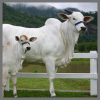
Cow temperament was evaluated in 1/2 Nellore 1/2 Angus cows from four distinct generations (five herds) from 2005 to 2022. Cows were scored when their calves were processed (1 d age)...
Read more
-

Feb
22
Interpretive Summary: Phenylalanine requirements using the direct amino acid oxidation technique, and the effects of dietary phenylalanine on food intake, gastric emptying, and macronutrient metabolism in adult cats

Two studies were conducted to evaluate 1) the minimum requirement for dietary Phe and 2) the effects of Phe on gastric emptying (GE) and food intake in adult cats. In study 1, the minimum Phe requirement was estimated using the direct amino acid oxidation (DAAO) technique.
Read more
-

Feb
22
Interpretive Summary: Effects of a second iron-dextran injection administered to piglets during lactation on differential gene expression in liver and duodenum at weaning
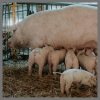
Iron deficiency anemia (IDA) in neonatal piglets is a problem that occurs unless there is intervention with exogenous iron. The most common method to prevent IDA is with an iron injection within 48 h of birth.
Read more
-

Feb
22
Interpretive Summary: Alterations of rumen and fecal microbiome in growing beef and dairy steers fed rumen-protected Capsicum oleoresin

The microbiome is the collection of microbes present in an animal’s body and has been discovered to be directly connected to animal health and productivity. In production animals, such as feedlot cattle, the microbiome can be modulated by antimicrobials to promote growth, but increasing consumer pressure to reduce antimicrobial use has producers seeking alternatives.
Read more
-

Feb
22
Interpretive Summary: Enteric methane emission reduction potential of natural feed supplements in ewe diets

Reducing methane emissions from agriculture is vital to minimize the effects of global warming and to meet greenhouse gas reduction targets set by EU policy. In this experiment, a range of natural feed supplements were offered to mature ewes through the concentrated portion of their diet.
Read more
-

Feb
21
About Calihan Waller - 2024 ASAS DC Intern

2024 DC Policy Intern
Read more
-

Feb
21
A Giving Partner's Message - Shawn Archibeque, Ph.D.

A Giving Partner's Message
Read more
-

Feb
21
Honoring Dr. Gretchen Hill

Honoring Dr. Gretchen Hill
Read more
-

Feb
15
Interpretive Summary: Effects of bacterial direct-fed microbial combinations on beef cattle growth performance, feeding behavior, nutrient digestibility, ruminal morphology, and carcass characteristics
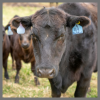
Direct-fed microbials (DFM) are naturally occurring microorganisms that alter cattle ruminal fermentation and intestinal function and have been shown to improve growth performance and nutrient digestibility of cattle. The use of DFM in animal feed has continuously increased in feedlots as an alternative to traditional antibiotic additives, which have gained negative public perception and additional regulatory scrutiny.
Read more
-

Feb
15
Interpretive Summary: The effects of torula yeast as a protein source on apparent total tract digestibility, inflammatory markers, and fecal microbiota dysbiosis index in Labrador Retrievers with chronically poor stool quality

Pet and human populations continue to grow and compete for nutritious, sustainable protein sources. The incorporation of alternative proteins like torula yeast can provide a solution to this problem. Torula yeast also may have additional health benefits like reducing gut inflammation.
Read more
-

Feb
15
Interpretive Summary: Supplementing vitamins and minerals to beef heifers during gestation: impacts on mineral status in the dam and offspring, and growth and physiological responses of female offspring from birth to puberty
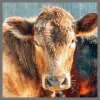
Great variation exists in management decisions to offer a vitamin and mineral supplement to cow–calf herds in the Northern Great Plains. Decisions to supplement (or not) vitamins/minerals during critical periods of fetal development may have lasting postnatal impacts on the offspring; however, there is a lack of reports focusing on the long-term offspring outcomes.
Read more
-

Feb
15
Interpretive Summary: Impact of maternal live yeast supplementation to sows on intestinal inflammatory cytokine expression and tight junction proteins in suckling and weanling piglets

Increasing evidence supports the benefits of improving sow nutrition during gestation and lactation to promote gastrointestinal development and overall health of piglets. The objective of this research was to investigate the effects of maternal live yeast (LY) supplementation to sows during late gestation and lactation periods on the intestinal health of suckling and weaned piglets.
Read more
-

Feb
15
Interpretive Summary: Effect of Saccharomyces cerevisiae Postbiotics and Essential Oil on Growth Performance and Intestinal Health of Weanling Pigs During K88 ETEC Infection

Weanling pigs are vulnerable to a variety of stressors and pathogen infections. Enterotoxigenic Escherichia coli (ETEC) is one of the leading causes of diarrhea and growth retardation in weanling pigs.
Read more
-

Feb
08
Interpretive Summary: Effects of dietary supplementation with 3-nitrooxypropanol on enteric methane production, rumen fermentation, and performance in young growing beef cattle offered a 50:50 forage:concentrate diet
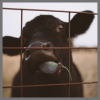
Enteric methane (CH4) is a by-product from the fermentation of feed in the digestive tract of cattle. The production of CH4 is responsible for the loss of 2% to 12% of the animal’s gross energy intake.
Read more
-

Feb
08
Interpretive Summary: Effects of bacterial direct-fed microbial mixtures offered to beef cattle consuming finishing diets on intake, nutrient digestibility, feeding behavior, and ruminal kinetics/fermentation profile
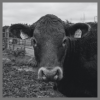
During the finishing phase, a high-energy diet offers benefits related to beef cattle growth and development. However, it is essential to acknowledge that finisher diets are energy-dense and can pose digestive challenges, such as subacute ruminal acidosis.
Read more
-

Feb
08
Interpretive Summary: Effect of supplementing a Bacillus subtilis-based probiotic on performance, intestinal integrity, and serum antioxidant capacity and metabolites concentrations of heat-stressed growing pigs
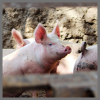
High ambient temperature provokes heat stress in animals, and pigs are highly affected showing low performance, and intestinal integrity and microbiota compromised. Probiotics could help pigs to maintain a healthy intestinal environment.
Read more
-

Feb
08
Interpretive Summary: Daily dosing of cannabidiol (CBD) demonstrates a positive effect on measures of stress in dogs during repeated exposure to car travel

Pet dogs often experience stress during routine car travel which can negatively affect both dogs and humans. A range of management and treatment options exist to address this, such as behavior modification, drug therapy, and supplements, yielding mixed results.
Read more
-

Feb
08
Interpretive Summary: Is there a right time for dairy Alpine goat kid weaning: How does the weaning age of dairy Alpine goat kids affect their growth and behavior?
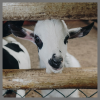
In dairy goat kids, there is limited literature available on weaning management practices, despite this period being one of the most stressful events for kids and being associated with measures of poor welfare. This study aimed to compare weaning of dairy goat kids at 6-, 8-, and 10-wk of age to maximize outcome measures of welfare related to growth, feed intake, and behavior.
Read more
-

Feb
08
Interpretive Summary: Rehydration post-transport: duration of oral fluid therapy on behavior, biochemical measures of hydration, and health of neonatal dairy calves
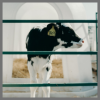
Most male calves are sold and transported from the dairy farm soon after birth. Typically, calves are transported without access to milk and/or water, and they often arrive at calf-raising facilities with varying degrees of dehydration.
Read more
-

Feb
01
Interpretive Summary: FDA releases antimicrobial report

The United States Food and Drug Administration’s (FDA’s) Center for Veterinary Medicine (CVM) published the 2022 Summary Report on Antimicrobials Sold or Distributed for Use in Food-Producing Animals. This year, the FDA published the results in an interactive dashboard that allows users to interact with the data and create data visualizations using criteria such as antimicrobial drug class, species, and year.
Read more
 FebInterpretive Summary: Genetic evaluation of crossbred Bos indicus cow temperament at parturition
FebInterpretive Summary: Genetic evaluation of crossbred Bos indicus cow temperament at parturition Cow temperament was evaluated in 1/2 Nellore 1/2 Angus cows from four distinct generations (five herds) from 2005 to 2022. Cows were scored when their calves were processed (1 d age)...
Cow temperament was evaluated in 1/2 Nellore 1/2 Angus cows from four distinct generations (five herds) from 2005 to 2022. Cows were scored when their calves were processed (1 d age)... FebInterpretive Summary: Phenylalanine requirements using the direct amino acid oxidation technique, and the effects of dietary phenylalanine on food intake, gastric emptying, and macronutrient metabolism in adult cats
FebInterpretive Summary: Phenylalanine requirements using the direct amino acid oxidation technique, and the effects of dietary phenylalanine on food intake, gastric emptying, and macronutrient metabolism in adult cats Two studies were conducted to evaluate 1) the minimum requirement for dietary Phe and 2) the effects of Phe on gastric emptying (GE) and food intake in adult cats. In study 1, the minimum Phe requirement was estimated using the direct amino acid oxidation (DAAO) technique.
Two studies were conducted to evaluate 1) the minimum requirement for dietary Phe and 2) the effects of Phe on gastric emptying (GE) and food intake in adult cats. In study 1, the minimum Phe requirement was estimated using the direct amino acid oxidation (DAAO) technique. FebInterpretive Summary: Effects of a second iron-dextran injection administered to piglets during lactation on differential gene expression in liver and duodenum at weaning
FebInterpretive Summary: Effects of a second iron-dextran injection administered to piglets during lactation on differential gene expression in liver and duodenum at weaning Iron deficiency anemia (IDA) in neonatal piglets is a problem that occurs unless there is intervention with exogenous iron. The most common method to prevent IDA is with an iron injection within 48 h of birth.
Iron deficiency anemia (IDA) in neonatal piglets is a problem that occurs unless there is intervention with exogenous iron. The most common method to prevent IDA is with an iron injection within 48 h of birth. FebInterpretive Summary: Alterations of rumen and fecal microbiome in growing beef and dairy steers fed rumen-protected Capsicum oleoresin
FebInterpretive Summary: Alterations of rumen and fecal microbiome in growing beef and dairy steers fed rumen-protected Capsicum oleoresin The microbiome is the collection of microbes present in an animal’s body and has been discovered to be directly connected to animal health and productivity. In production animals, such as feedlot cattle, the microbiome can be modulated by antimicrobials to promote growth, but increasing consumer pressure to reduce antimicrobial use has producers seeking alternatives.
The microbiome is the collection of microbes present in an animal’s body and has been discovered to be directly connected to animal health and productivity. In production animals, such as feedlot cattle, the microbiome can be modulated by antimicrobials to promote growth, but increasing consumer pressure to reduce antimicrobial use has producers seeking alternatives. FebInterpretive Summary: Enteric methane emission reduction potential of natural feed supplements in ewe diets
FebInterpretive Summary: Enteric methane emission reduction potential of natural feed supplements in ewe diets Reducing methane emissions from agriculture is vital to minimize the effects of global warming and to meet greenhouse gas reduction targets set by EU policy. In this experiment, a range of natural feed supplements were offered to mature ewes through the concentrated portion of their diet.
Reducing methane emissions from agriculture is vital to minimize the effects of global warming and to meet greenhouse gas reduction targets set by EU policy. In this experiment, a range of natural feed supplements were offered to mature ewes through the concentrated portion of their diet. FebAbout Calihan Waller - 2024 ASAS DC Intern
FebAbout Calihan Waller - 2024 ASAS DC Intern 2024 DC Policy Intern
2024 DC Policy Intern FebA Giving Partner's Message - Shawn Archibeque, Ph.D.
FebA Giving Partner's Message - Shawn Archibeque, Ph.D. A Giving Partner's Message
A Giving Partner's Message FebHonoring Dr. Gretchen Hill
FebHonoring Dr. Gretchen Hill Honoring Dr. Gretchen Hill
Honoring Dr. Gretchen Hill FebInterpretive Summary: Effects of bacterial direct-fed microbial combinations on beef cattle growth performance, feeding behavior, nutrient digestibility, ruminal morphology, and carcass characteristics
FebInterpretive Summary: Effects of bacterial direct-fed microbial combinations on beef cattle growth performance, feeding behavior, nutrient digestibility, ruminal morphology, and carcass characteristics Direct-fed microbials (DFM) are naturally occurring microorganisms that alter cattle ruminal fermentation and intestinal function and have been shown to improve growth performance and nutrient digestibility of cattle. The use of DFM in animal feed has continuously increased in feedlots as an alternative to traditional antibiotic additives, which have gained negative public perception and additional regulatory scrutiny.
Direct-fed microbials (DFM) are naturally occurring microorganisms that alter cattle ruminal fermentation and intestinal function and have been shown to improve growth performance and nutrient digestibility of cattle. The use of DFM in animal feed has continuously increased in feedlots as an alternative to traditional antibiotic additives, which have gained negative public perception and additional regulatory scrutiny. FebInterpretive Summary: The effects of torula yeast as a protein source on apparent total tract digestibility, inflammatory markers, and fecal microbiota dysbiosis index in Labrador Retrievers with chronically poor stool quality
FebInterpretive Summary: The effects of torula yeast as a protein source on apparent total tract digestibility, inflammatory markers, and fecal microbiota dysbiosis index in Labrador Retrievers with chronically poor stool quality Pet and human populations continue to grow and compete for nutritious, sustainable protein sources. The incorporation of alternative proteins like torula yeast can provide a solution to this problem. Torula yeast also may have additional health benefits like reducing gut inflammation.
Pet and human populations continue to grow and compete for nutritious, sustainable protein sources. The incorporation of alternative proteins like torula yeast can provide a solution to this problem. Torula yeast also may have additional health benefits like reducing gut inflammation. FebInterpretive Summary: Supplementing vitamins and minerals to beef heifers during gestation: impacts on mineral status in the dam and offspring, and growth and physiological responses of female offspring from birth to puberty
FebInterpretive Summary: Supplementing vitamins and minerals to beef heifers during gestation: impacts on mineral status in the dam and offspring, and growth and physiological responses of female offspring from birth to puberty Great variation exists in management decisions to offer a vitamin and mineral supplement to cow–calf herds in the Northern Great Plains. Decisions to supplement (or not) vitamins/minerals during critical periods of fetal development may have lasting postnatal impacts on the offspring; however, there is a lack of reports focusing on the long-term offspring outcomes.
Great variation exists in management decisions to offer a vitamin and mineral supplement to cow–calf herds in the Northern Great Plains. Decisions to supplement (or not) vitamins/minerals during critical periods of fetal development may have lasting postnatal impacts on the offspring; however, there is a lack of reports focusing on the long-term offspring outcomes. FebInterpretive Summary: Impact of maternal live yeast supplementation to sows on intestinal inflammatory cytokine expression and tight junction proteins in suckling and weanling piglets
FebInterpretive Summary: Impact of maternal live yeast supplementation to sows on intestinal inflammatory cytokine expression and tight junction proteins in suckling and weanling piglets Increasing evidence supports the benefits of improving sow nutrition during gestation and lactation to promote gastrointestinal development and overall health of piglets. The objective of this research was to investigate the effects of maternal live yeast (LY) supplementation to sows during late gestation and lactation periods on the intestinal health of suckling and weaned piglets.
Increasing evidence supports the benefits of improving sow nutrition during gestation and lactation to promote gastrointestinal development and overall health of piglets. The objective of this research was to investigate the effects of maternal live yeast (LY) supplementation to sows during late gestation and lactation periods on the intestinal health of suckling and weaned piglets. FebInterpretive Summary: Effect of Saccharomyces cerevisiae Postbiotics and Essential Oil on Growth Performance and Intestinal Health of Weanling Pigs During K88 ETEC Infection
FebInterpretive Summary: Effect of Saccharomyces cerevisiae Postbiotics and Essential Oil on Growth Performance and Intestinal Health of Weanling Pigs During K88 ETEC Infection Weanling pigs are vulnerable to a variety of stressors and pathogen infections. Enterotoxigenic Escherichia coli (ETEC) is one of the leading causes of diarrhea and growth retardation in weanling pigs.
Weanling pigs are vulnerable to a variety of stressors and pathogen infections. Enterotoxigenic Escherichia coli (ETEC) is one of the leading causes of diarrhea and growth retardation in weanling pigs. FebInterpretive Summary: Effects of dietary supplementation with 3-nitrooxypropanol on enteric methane production, rumen fermentation, and performance in young growing beef cattle offered a 50:50 forage:concentrate diet
FebInterpretive Summary: Effects of dietary supplementation with 3-nitrooxypropanol on enteric methane production, rumen fermentation, and performance in young growing beef cattle offered a 50:50 forage:concentrate diet Enteric methane (CH4) is a by-product from the fermentation of feed in the digestive tract of cattle. The production of CH4 is responsible for the loss of 2% to 12% of the animal’s gross energy intake.
Enteric methane (CH4) is a by-product from the fermentation of feed in the digestive tract of cattle. The production of CH4 is responsible for the loss of 2% to 12% of the animal’s gross energy intake. FebInterpretive Summary: Effects of bacterial direct-fed microbial mixtures offered to beef cattle consuming finishing diets on intake, nutrient digestibility, feeding behavior, and ruminal kinetics/fermentation profile
FebInterpretive Summary: Effects of bacterial direct-fed microbial mixtures offered to beef cattle consuming finishing diets on intake, nutrient digestibility, feeding behavior, and ruminal kinetics/fermentation profile During the finishing phase, a high-energy diet offers benefits related to beef cattle growth and development. However, it is essential to acknowledge that finisher diets are energy-dense and can pose digestive challenges, such as subacute ruminal acidosis.
During the finishing phase, a high-energy diet offers benefits related to beef cattle growth and development. However, it is essential to acknowledge that finisher diets are energy-dense and can pose digestive challenges, such as subacute ruminal acidosis. FebInterpretive Summary: Effect of supplementing a Bacillus subtilis-based probiotic on performance, intestinal integrity, and serum antioxidant capacity and metabolites concentrations of heat-stressed growing pigs
FebInterpretive Summary: Effect of supplementing a Bacillus subtilis-based probiotic on performance, intestinal integrity, and serum antioxidant capacity and metabolites concentrations of heat-stressed growing pigs High ambient temperature provokes heat stress in animals, and pigs are highly affected showing low performance, and intestinal integrity and microbiota compromised. Probiotics could help pigs to maintain a healthy intestinal environment.
High ambient temperature provokes heat stress in animals, and pigs are highly affected showing low performance, and intestinal integrity and microbiota compromised. Probiotics could help pigs to maintain a healthy intestinal environment. FebInterpretive Summary: Daily dosing of cannabidiol (CBD) demonstrates a positive effect on measures of stress in dogs during repeated exposure to car travel
FebInterpretive Summary: Daily dosing of cannabidiol (CBD) demonstrates a positive effect on measures of stress in dogs during repeated exposure to car travel Pet dogs often experience stress during routine car travel which can negatively affect both dogs and humans. A range of management and treatment options exist to address this, such as behavior modification, drug therapy, and supplements, yielding mixed results.
Pet dogs often experience stress during routine car travel which can negatively affect both dogs and humans. A range of management and treatment options exist to address this, such as behavior modification, drug therapy, and supplements, yielding mixed results. FebInterpretive Summary: Is there a right time for dairy Alpine goat kid weaning: How does the weaning age of dairy Alpine goat kids affect their growth and behavior?
FebInterpretive Summary: Is there a right time for dairy Alpine goat kid weaning: How does the weaning age of dairy Alpine goat kids affect their growth and behavior? In dairy goat kids, there is limited literature available on weaning management practices, despite this period being one of the most stressful events for kids and being associated with measures of poor welfare. This study aimed to compare weaning of dairy goat kids at 6-, 8-, and 10-wk of age to maximize outcome measures of welfare related to growth, feed intake, and behavior.
In dairy goat kids, there is limited literature available on weaning management practices, despite this period being one of the most stressful events for kids and being associated with measures of poor welfare. This study aimed to compare weaning of dairy goat kids at 6-, 8-, and 10-wk of age to maximize outcome measures of welfare related to growth, feed intake, and behavior. FebInterpretive Summary: Rehydration post-transport: duration of oral fluid therapy on behavior, biochemical measures of hydration, and health of neonatal dairy calves
FebInterpretive Summary: Rehydration post-transport: duration of oral fluid therapy on behavior, biochemical measures of hydration, and health of neonatal dairy calves Most male calves are sold and transported from the dairy farm soon after birth. Typically, calves are transported without access to milk and/or water, and they often arrive at calf-raising facilities with varying degrees of dehydration.
Most male calves are sold and transported from the dairy farm soon after birth. Typically, calves are transported without access to milk and/or water, and they often arrive at calf-raising facilities with varying degrees of dehydration. FebInterpretive Summary: FDA releases antimicrobial report
FebInterpretive Summary: FDA releases antimicrobial report The United States Food and Drug Administration’s (FDA’s) Center for Veterinary Medicine (CVM) published the 2022 Summary Report on Antimicrobials Sold or Distributed for Use in Food-Producing Animals. This year, the FDA published the results in an interactive dashboard that allows users to interact with the data and create data visualizations using criteria such as antimicrobial drug class, species, and year.
The United States Food and Drug Administration’s (FDA’s) Center for Veterinary Medicine (CVM) published the 2022 Summary Report on Antimicrobials Sold or Distributed for Use in Food-Producing Animals. This year, the FDA published the results in an interactive dashboard that allows users to interact with the data and create data visualizations using criteria such as antimicrobial drug class, species, and year.



